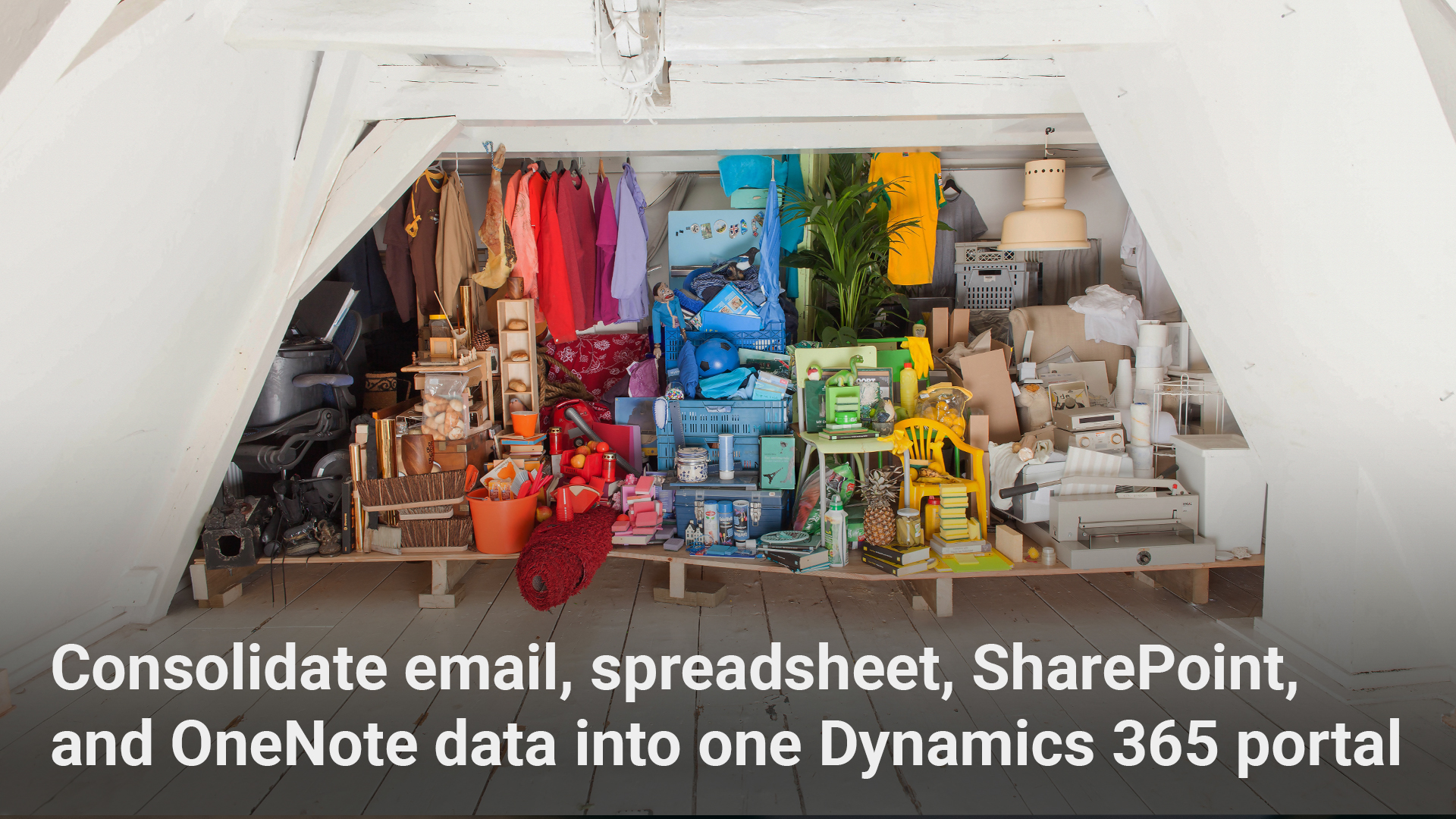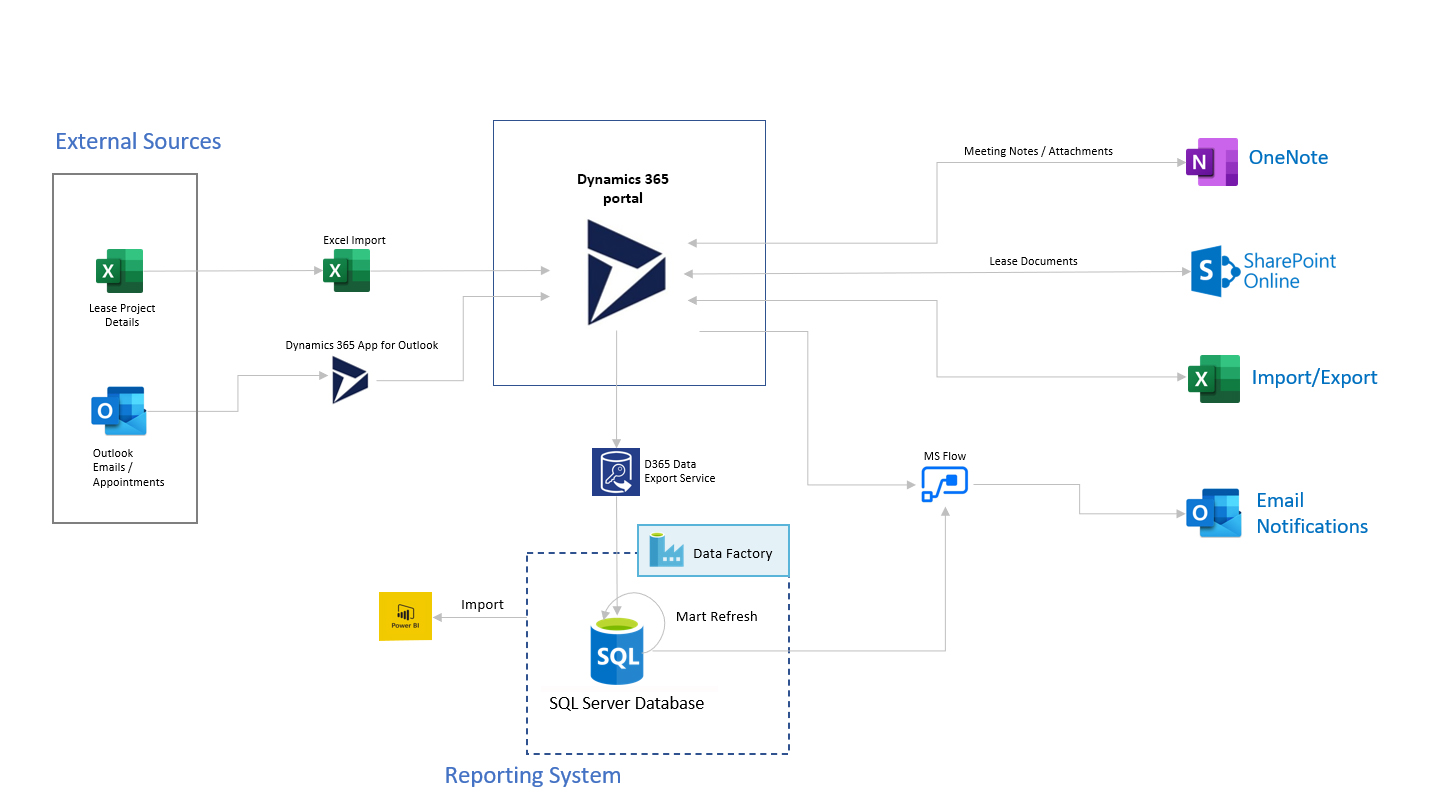
Business Case:
Our client leases data centers across the globe. To maintain their leases, our client coordinates with up to 100 lease providers, which involves multiple methods of communication. In addition, a single lease can require as many as 20-30 documents.
Previously, our client tracked center details across multiple different spreadsheets. Quotations, site progress, and updates were managed over email and through notations from in-person visits. Our client struggled to consolidate data and track updates. Our client needed a centralized, easy-to-maintain solution that provided one source of truth for global information.
Key Challenges:
•
Consolidate assets into a single location, including emails, documents, and meeting notes
•
Integrate existing SharePoint system with the solution
•
Enable users from different regions to easily access global data center details such as sites, lease providers, and geographies
Our Solution:
We created a Dynamics 365 portal that consolidates and presents details from email, Excel spreadsheets, OneNote, and SharePoint Online.
 |
| Figure 1: Solution Design |
Our solution uses Dynamics 365 App for Outlook to link to our client’s primary mail system. Users can track Outlook emails and appointments directly from the Dynamics 365 environment. The portal consolidates all global data center information, which can be accessed from different geographies.
During our Outlook implementation, we identified an opportunity to enable our client to manage data directly in Dynamics 365. Understanding the value in this capability, our client expanded the solution scope. We added entities (tables in the Dynamics 365 environment) to replace our client’s existing Excel records. Dynamic 365’s built-in auditing capabilities allow our client to track edits in real time. Users can also import Excel spreadsheets directly into the portal rather than manually inputting information. We added an extension that enables users to upload OneNote and SharePoint Online files to the Dynamics 365 portal.
We implemented role-based security to protect our client’s sensitive data. There are three main roles:
1.
Admin: Can access, update, create, and delete all records.
2.
User: Can access, update, create, and delete any records within their specific territory/project.
3.
Reader: Can view all records, but does not have editing permissions.
Our solution uses the Dynamics 365 export service to auto-synchronize our client’s SQL database. The SQL database acts as an import model for Power BI reports that generate key leadership insights. To ensure data is validated securely from end to end, we implemented Power Automate flows. If the uploaded data contains errors, our solution sends an email notification to managers, who can take immediate corrective action.
Business Outcomes:
Our centralized Dynamics 365 platform enabled our client to track appointments, emails, documents, and notes across the entire team. By developing a single source of truth, our client avoids miscommunication and rework, reducing data management efforts by 60%. Maintaining data sets is easier, as all information can be accessed from one location. With role-based security and edit tracking, our client can monitor access and update permissions.
We integrated data from multiple sources, which enables field workers operate seamlessly. For example, a field worker might deal with a data center that operates out of Paris. All team members can view emails and appointments from our centralized platform. If the field worker then visits the Paris data center and records meeting notes on OneNote, these can also be uploaded directly to the Dynamics 365 portal. All relevant data will be automatically associated with the Paris data center records.
Our solution reduces data management and tracking efforts by 4-6 hours a week. Since implementation, our portal has supported multi-channel communication between our client’s 50 team members and the nearly 100 data center providers around the world.
Highlights:
• Developed a Dynamics 365 portal that centralizes data across emails, Excel spreadsheets, OneNote, and SharePoint Online
• Eliminated manual tracking, reducing data management efforts by 60%
•
Enabled seamless communication between 50 team members across the globe, reducing efforts by 4-6 hours a week
•
Simplified data maintenance by enabling users to edit data directly in the portal
•
Implemented role-based security
